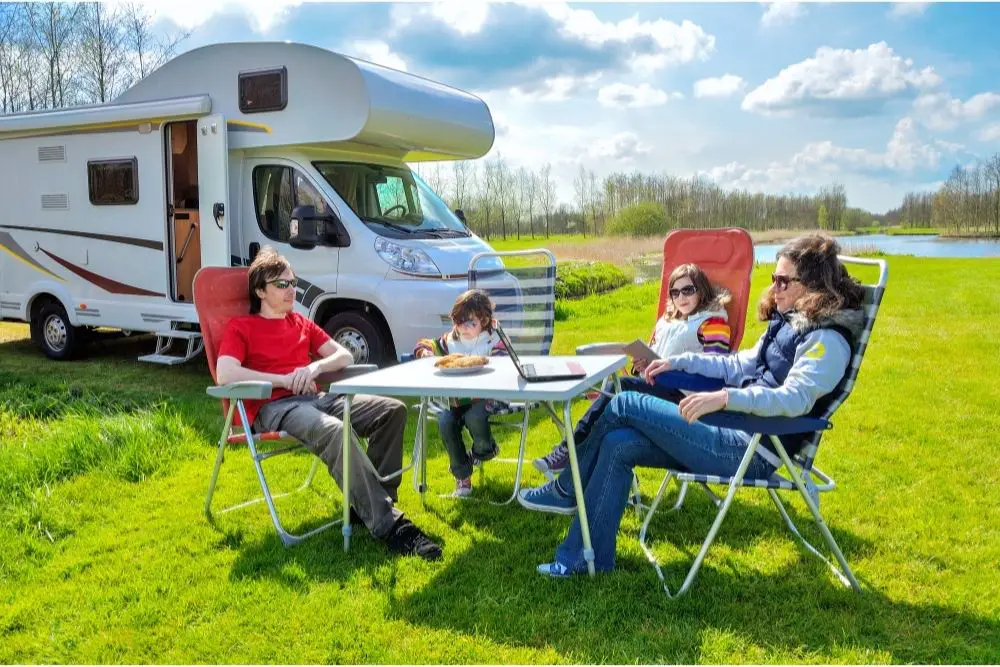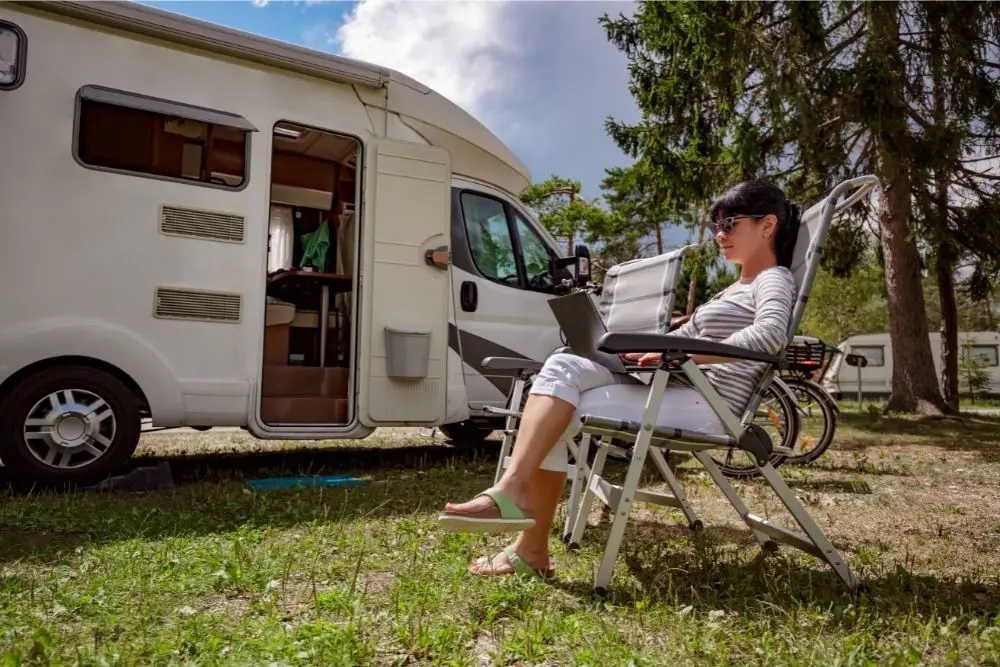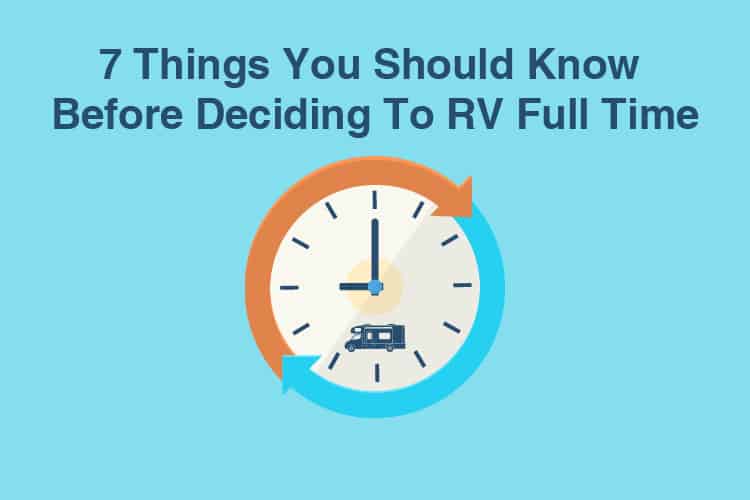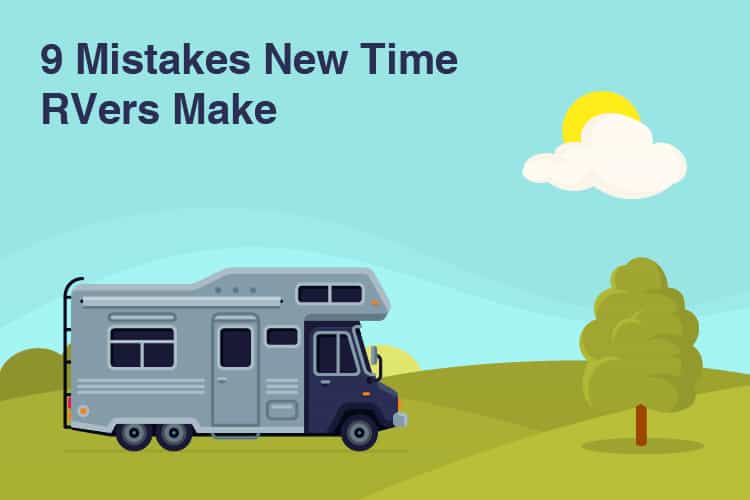When I finish a movie, I get in my camper and drive around the country – Pernell Roberts
The spirit of adventure and the overwhelming urge to see what lies just over the horizon was what drove our forefathers forward and helped them to found, and build America.
That pioneering frame of mind is still part of our collective psyche, and it’s largely responsible for cementing our national love of RV’s and our innate desire to hit the road and see as much of the land that was tamed by those intrepid settlers as we possibly can, while we can.

And even though the way in which we make our way from place to place and drink in the sights, sounds, everyday noise, and beauty of the country might have changed, our need to experience it, hasn’t.
While we don’t inch our way forward with barebones supplies, armed with only our wits, courage, and the belief in a better tomorrow anymore, we still share the idea that there’s something wonderful waiting around the next bend and just over the next hill. It’s that collective conviction and gut feeling that made and continues to make the RV lifestyle such a quintessential part of American life.
What Is An RV?
We’ve already talked about the RV lifestyle, and the first, and most important thing you’ll need to know in order to understand and embrace that lifestyle, is what an RV is.
We’re sure that you’ve heard the term bandied around the office, on television, or maybe just in passing, and if you’re unsure what it means, or what it is, don’t worry, by the time you’ve finished drinking your coffee and reading this article, you’ll know everything that you’ll need to so that you can choose your first RV and answer the call of the wild.
Basically, RV simply means recreational vehicle. It refers to any vehicle, usually a motorhome, a truck, camper van, caravan, or combination of the four that becomes your home away from home.
It’s a vehicle that has enough modern luxuries and comfort to ensure that the time that you spend out on the road, vacationing with your friends and family is as comfortable as possible. After all, the clue is in its name, because no one wants to spend their precious recreational time in a vehicle that isn’t fun, and enjoyable to be in.
The first purpose-built recreational vehicle, one that was simply designed to tap into the communal American desire to follow in the footsteps of the pioneers and have a good time while answering that spiritual need, was built by Packard in nineteen fifteen. It weighed three tons, was twenty-eight feet long, could sleep eleven people, and forever established the blueprint of what most of us would think of as ‘RV’.
Packard set the precedent, opened the floodgates, and created a national pastime that’s, in the hundred years since the first production RV rolled off the line, become part of the American zeitgeist and has slowly and surely, been increasing in popularity ever since.
It’s Not Just An Adventure, It’s A Lifestyle
The advent of the RV coincided with one of the bleakest periods in American history, the Wall Street Crash of nineteen twenty-nine.
It was the financial meltdown that sent the country spiraling into the Great Depression, and as people began to lose their jobs and their homes, the RV became a vehicle of necessity rather than choice, as it provided shelter and accommodation for families who were forced to travel the highways and byways of the country in search of work and any sort of financial security.
The RV “lifestyle” became a facet of American life that was born in hardship, but as times became less demanding and easier, and the country picked itself up, dusted itself off, and established itself as one of the most prosperous nations on Earth, evolved into a lifestyle that people readily and happily chose instead of being something that fate pushed them toward and into.
Twenty-first century RV devotees have found the liberty that we were all promised by the American dream, as they’re not tied to any place, and can move to wherever their careers and lives take them. And in the digital age where you can literally work from anywhere and don’t have to clock into the office every single morning and sign out last thing at night, wherever you lay your hat and park your RV, that can be your home for however long you want or need it to be.
Even if you don’t sign on the dotted line and completely subscribe to the theory of living in your RV full-time, you can still reap the rewards that an RV offers. Whenever you fancy a weekend or a week away, you don’t need to plan and get bogged down in detail, you can just load up your RV and go wherever the road takes you.
And, if we’re honest, if we’re going to spend a couple of days camping, we’d rather do it in the luxury of our RV than hugging the ground in a tent. The world, if you decide to see it from behind the wheel of an RV, will be to coin an often overused phrase, your oyster.
All Shapes And Sizes And Everything In Between
Progress changes everything, and in the century since Packard designed and manufactured the first RV, recreational vehicles have come a long way. They don’t all look the same, they don’t all conform to Packard’s original vision, and even if you don’t know what you’re looking for or want from an RV, the perfect mobile home is out there, just waiting for you.
And to help you find your ideal choice of a weekend getaway or maybe something a little more permanent that’ll guide you on the path to adventure, we’re going to take a look at some of the more popular, and less obvious choices of RV that are ready and waiting for you to take the next step on life’s great journey.

Following The Packard Path – Motorhomes
The definition of driven RV, Motorhomes adhere to the ideology that Packard introduced to the American psyche in nineteen fifty and are specifically designed to be a home with a motor. They’re houses that you can drive, and epitomize the image that immediately springs to mind when most of us think about RV’s.
Oh, and one of the craziest things about motorhomes? Eighty-five percent of the RV’s driven by the American public that fall into this category are made in Indiana, and sixty percent of those are made in Elkhart County, which has been unofficially dubbed “The RV Capital of the World”.
Broadly speaking motorhomes fall into three distinct groups:
- Class A
The grandaddies and most luxurious form of motorhome that anyone can buy and drive. Class A vehicles follow the Packard model to the letter and are usually built on existing truck chassis and contain every conceivable comfort that you could pack into your own home.
They’re long, heavy and driving them can take some getting used to, so if you are going to traverse the highways in one, we’d strongly recommend that you maybe take some truck driving lessons before you sit in the driver’s seat of a Class A.
- Class B
The smallest version of a motorhome, they’re closer in size and stature to a traditional camper van (and are actually called camper vans in Europe) rather than the more opulent Class A motorhome. They come with sleeping space, a kitchenette (in which you’ll be able to cook up a storm, regardless of where you are) and a shower cubicle, and bathroom space. Easier to drive, park, and cheaper to run than Class A’s, they’re more of a weekend getaway vehicle than a mobile living solution.
- Class C
While it might seem a little odd, the middle of the road motorhome and the recreational vehicle aimed squarely at most American families is the Class C. Size-wise, they sit squarely between a Class A and Class B, but unlike a Class B also have a living room, two separate bedrooms, a kitchenette, and a bathroom area. They are the archetypal American motorhome and RV.
The Camping Life
Smaller and designed to be more versatile than their larger motorhome counterparts, campers are made for the RV’er who wants to keep their home and road life separate.
- Truck Campers
Built to fit in, and on the bed of your truck, these campers are large enough to stand up in and usually feature a bedroom (which will extend over the cab of your truck when it’s fitted), a kitchenette, and a bathroom. Wherever your truck can go, its camper can go, so your destination will only be limited by your imagination.
And best of all? When you don’t want to explore the country, you can detach the camper until you need it again.
- Pop Up’s
It looks like a cargo trailer but has most of the comforts of a much larger conventional trailer. Thanks to having a collapsible hard roof, which you can raise and lower wherever you want, whenever you want, they’re easy to tow, don’t take up a lot of space, and are an ideal camping solution for those people who don’t like to sleep, or cook and vacation in a tent.
- Camper Vans
These are standard conversions that can be fitted in almost any existing van on the road. They usually feature a sleeping area, kitchenette, and maybe, if you’re willing to spend a little more money, a portable shower. They are, quite literally, the easiest way to become a part of the RV crowd.
Trailer Time
Believe it or not, trailers are classed as RV’s, and while you and your family can’t enjoy all the benefits of a motorhome while you’re driving with a trailer, as soon as you get to wherever it is you’ve decided to go, you can unhook your trailer and enjoy being at home regardless of where you are.
- Fifth Wheel
Made to clip straight into a purpose-fitted hitch in your truck bed, Fifth Wheel trailers are stable and secure to tow and almost look like you’ve converted your truck into a motorhome. Spacious and roomy, they usually have a living area, kitchenette, bathroom, and a sleeping area inside the overhang that fits over the bed and, or cab of your truck.
- Travel Trailers
The most popular and well-known type of trailer in America, travel trailers are made to be towed behind just about any family vehicle and are usually between twenty and forty feet in length – but if you’re going to go large, you’ll need the power and torque that comes hand in hand with a truck to tow one.
They were made to be homes, and any comfort or luxury you have at home, you can take with you on the road and use in a travel trailer. They always have a living area, bathroom, kitchen, and at least two bedrooms, and are the very definition of a mobile home.
The biggest and baddest RV’s in the trailer world, toys haulers, as well as having all of the living space that you’ll need in a trailer, also have more than enough storage space for any “toys” (motorcycles, quad bikes, rafts, canoes, and jet skis) that you might want to take with you when you venture away from home.
Because of the additional storage space that most of them have, even in their fifth wheel configurations, toy haulers are always larger than their standard travel counterparts.
- Teardrop Trailers
About as basic as a trailer gets, teardrops are usually between eight and fifteen feet long and are designed to be towed behind family cars. They usually feature a sleeping area, a basic kitchenette, and sometimes a small bathroom or shower. They’re made to be light, portable and take the camping experience to the next level.
RV Life
As we said earlier, whatever aspect of the RV lifestyle appeals to you, you’ll now know how to make that happen and enjoy the freedom that comes with owning, living, and vacationing in a recreational vehicle.





